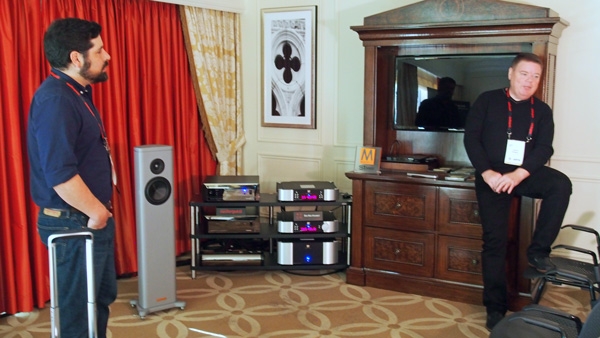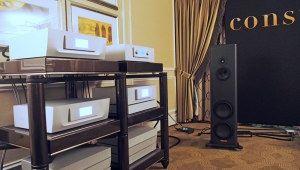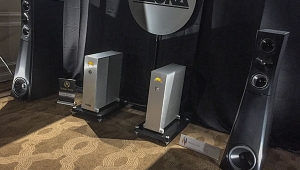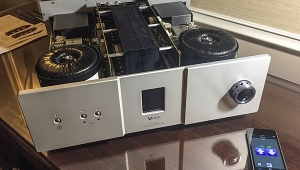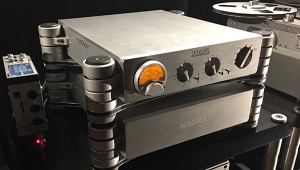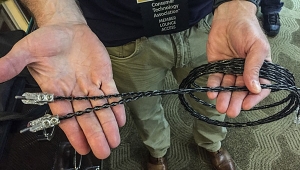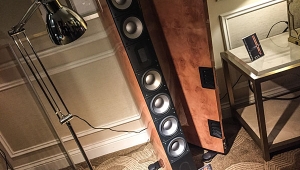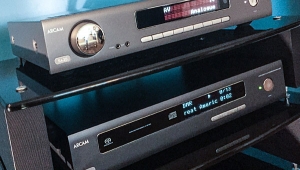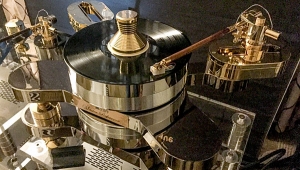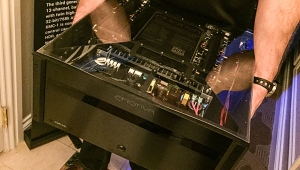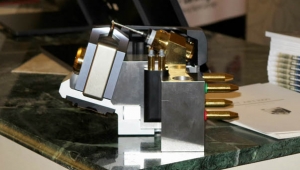| Columns Retired Columns & Blogs |
I'm a long time Stereophile reader (25 years!) and I very much admire your work Mr. Atkinson. (As well as Michael Fremer as a reviewer, and others).
However, some of us audiophiles can't help note, with some despair, that much of the same reasoning and evidence given in support of controversial high end audio claims find their mirror in the average Psychic And New Age Nostrums Fair.
A claim is made, usually with some sort of explanation for "why it works" - "life is based on energy, some energy is negative, our crystal is tuned to absorb negative energy!" and in the absence of any reliable, repeatable objective evidence, the recipient is asked to just "try it, and if you experience a difference...viola! The claims are true!"
That this method of inference has been used by people to ratify everything from the idea ground rhino horns increase male potency to homeopathy, to the phenomenon of mesmerism that swept Europe, should give one pause when encountering it yet again. One hopes for more in a technical hobby ostensibly grounded in engineering, in the real world.
But what do we get from companies like Audioquest?
I watched the video posted on Michael Fremer's Analog Planet of the Audioquest demo. What I saw was a salesman giving a standard patter "here's how your sonics are being compromised, here's how our product fixes it," priming the audience on what to expect, doing the demo, and then re-iterating to the audience what they were supposed to have just heard.
A perfect setting for bias and a technique used by salesmen everywhere. Clearly John you felt you heard a difference. But, is this really the type of situation in which such a judgement ought to be made? Personally I initially thought I heard a difference in the video of the demo. But then when I was able to jump back and forth between the same part of the music being played through each cable, the "obvious" differences didn't really seem to be there. And that was even using sighted evaluation.
Given this is a company who is happy to sell us a USB cable - a USB CABLE! - for over $10,000, I'd think it warrants having our skeptic hat on to begin with. We should be pretty demanding of evidence.
It always seems odd that a company like Audioquest tells us they've identified a technical problem, appealing to forms of radiation etc that are measurable...and yet, as far as I know, they do not provide actual measurable results showing they have fixed the problem. It's all done with the standard demo patter or "try it in your system and judge with your ears."
When I've seen companies like Shunyata and Audioquest called out on this, asked for good reasons to take their claims seriously, all I've seen are re-iterations of the technical claims and then...instead of any scientifically rigorous evidence...simple appeal to all their "satisfied customers."
Well, yes, the people happy to read your palm, or sell you healing magnets, or faith heal you, will point to "satisfied customers." People can be fooled. We know that. It's not evidence for the claim in question - especially for a TECHNICAL claim.
If the Audioquest power cord actually cleans the signal of the radiation etc as they claim, this should be measurable. And they should be able to hand those cables over to other engineers - ones not selling the cables - who should be able to ratify the claims by repeating the measurements. (Again, this is a report of what I've seen: I may have missed that these companies have provided the type of measurable evidence I'm referring to, I would be grateful to be given a link. Though I'm skeptical they have, given that it appears electrical engineers not associated with such companies tend to be skeptical).
Further given the claim is these cables actually alter the sonic signal of the device they power, THAT change in signal should be measurable (e.g. the signal from a CD player or amplifier with the Audioquest cable vs without). And given that this sonic change is purported to be audible, ESPECIALLY on the scale so many audiophiles describe - deeper, tighter bass, extended cleaner highs, etc - then this should be a measurable change at the output of the whole system.
And if it doesn't fall into the realm of a measured change known to be audible, then we should also want to test for the audibiity of the effects - e.g. bind testing.
Where are these measurements? I don't see them being provided by Audioquest. Or by Stereophile. Or by engineers who are not trying to sell us the products in question.
This is highly suspicious.
I'm not saying every person ought to turn his audio purchases into a scientific experiment. We are all of course free to spend as we wish on whatever makes us happy, and if placebo and bias is part of the mix, that's not necessarily bad in of itself.
BUT...to the extent we actually want to understand what is going on in the world and why, to the extend we really want to know if a manufacturer's claims have a basis in reality, and to the extent we care whether we are paying lots of money for the pleasure of being b.s'ed into hearing the same sound we would have heard without spending lots of money...THEN we ought to be far more rigorous about how these claims are evaluated.
For those of us who care about what is (more likely) true and why, and about actual technical advancements in our hobby, and making informed purchases, these issues matter.
